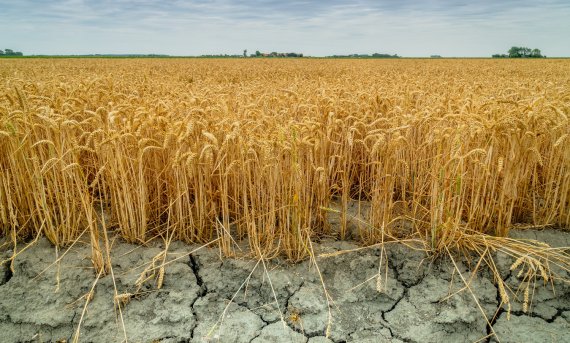This year is the third consecutive year that the Netherlands experiences extremely dry conditions. Sending rain is impossible, but the available precipitation can be put to much better use. Through the Klimap (which stands for climate adaptation in practice) project, WUR and 23 other parties will join forces to achieve this. Myriam de Graaf of the chair group Soil Water and Land use is the project leader.
Hold our own
De Graaf won’t solve the water issues on the fly. ‘But, Klimap does map the route towards more climate-proof land use.’ The approach targets the elevated sandy soils in the Netherlands, where the drought is fiercest. In essence, the method is simple. ‘We must hold our own’, De Graaf states. ‘We must use as much of the water as we can, rather than allowing it to flow into the sea.’
In Klimap, water authorities, provincial governments and various knowledge institutes collaborate. So-called development paths are designed to get everyone on board and focussed in the same direction. ‘These are descriptions of the process, meant to ensure everyone is aware of their particular role,’ De Graaf clarifies. ‘What path does your role require you to follow? What should water authorities do and how can you motivate farmers and nature managers.’
We must use as much of the water as we can, rather than allowing it to flow into the sea.
Myrjam de Graaf
In addition to the route, the project also stipulates what actions are to be taken along this path in order to protect the country from drought. The measures and methods are tested in living labs. ‘There is no need to start at zero,’ De Graaf stresses. ‘Much has already been developed in this area.’ For example, the Lumbricus project (lumbricus is Latin for worm) that maps and analyses climate adaptation measures in the field.
Reversed drainage
‘Consider, for example, research in the effect of worms on the soil’s infiltration capacity’, De Graaf explains, ‘or the use of sub-irrigation.’ Sub-irrigation is a type of reversed drainage, where the tubes that normally serve to drain excess water are used to supply water instead. ‘This research could be extended to include a study on the effects of sub-irrigation in the quality of groundwater or other hitherto absent information.’
A third part of the project is calculating the effect of local measures on the water system as a whole. In other words: what benefits do local measures have in the fight against drought if applied at a larger scale? The Klimap project spans four years and has a six million euro budget. The funding is provided by, among others, the Top Sectors, water authorities and provincial governments. Nature organisations and other water users are involved as a sounding board.

 Photo: Shutterstock
Photo: Shutterstock 